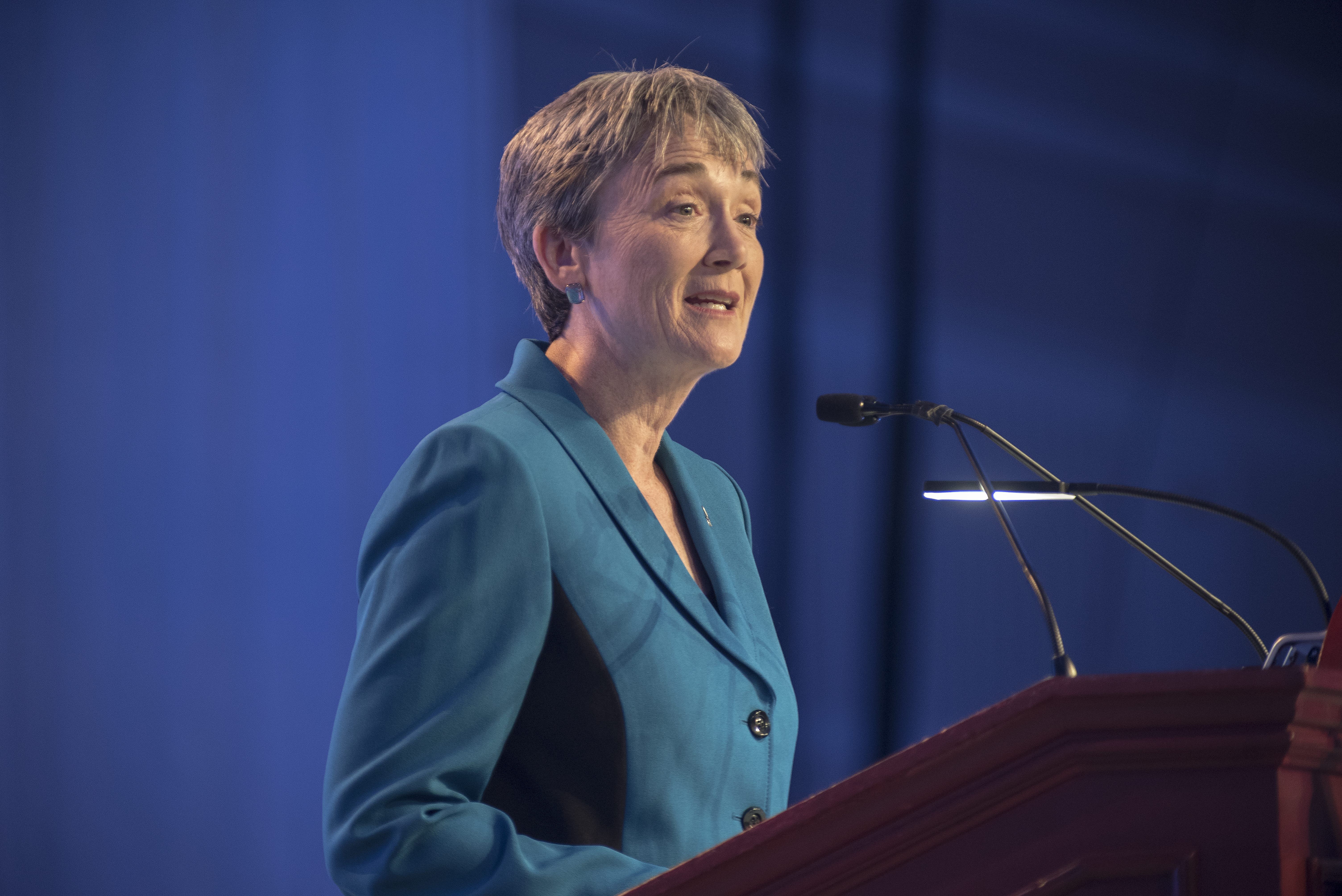Secretary of the Air Force Heather Wilson announced at AFA's Air, Space & Cyber Conference on Sept. 18, 2017, the Scientific Advisory Board would be helping USAF review its science and technology strategy, running a parallel study with the Air Force Research Laboratory. Staff photo by Mike Tsukamoto.
One of the Air Force Scientific Advisory Board’s two main studies in 2018 is a parallel effort to the service’s recently announced science and technology strategy review.
This main study will deliver an “independent, expert perspective on the critical air, space, and cyber technology development needed in the 2030-and-beyond environment, and propose policies, processes, and mechanisms that enable more rapid, affordable, and effective transitions of capability that provides distinctive advantage into the hands of the warfighter,” reads a release about it. The study will be compared with the Air Force Research Laboratory-led initiative to revamp its scientific infrastructure and is planned to ultimately result in a new strategy.
The second study from SAB—echoing one of AFRL’s own broad priorities in its S&T review—will focus on “technologies for enabling resilient command and control,” researching “current capabilities and limitations” in C2 and possible means to “improve” current systems for the service.
“We present the most challenging technology issues the service faces to the best and brightest in specific science fields,” said SAB chairman Werner Dahm about 2018’s goals.
Altogether, the various approaches USAF is taking with its S&T review—from the AFRL-led one to the SAB parallel—are what it deems a way to keep the country ahead of its adversaries in the scientific realm, now and decades into the future, said Secretary of the Air Force Heather Wilson when she announced the strategy review at AFA’s 2017 Air, Space, & Cyber Conference.
“We need to update our research priorities, but validation of research areas isn’t enough. We need to rethink the way in which we manage our path-breaking research,” Wilson said. “Hap Arnold’s vision for this Air Force still rings true. The United States will develop technologies to secure air dominance. We will underwrite our nation’s military supremacy.”
The SAB also released two abstracts out of three total assignments it had in 2017.
In the area of nuclear surety and certification, SAB submitted to the Air Force a set of six recommendations in an abstract of its study. For one, SAB said the service should “develop and update instructions, policies, and procedures to address continual full-spectrum cyber resilience.” In other words, improve the nuclear cybersecurity component, which it adds later should be sought in conjunction with the National Security Agency.
The other released set of recommendations aim to identify the “characteristics of emerging systems” that will increase demand from, and on, USAF’s test and evaluation (T&E) capabilities. Such stressors include “complex, software-defined capabilities; cyber vulnerabilities; autonomous and self-learning systems; and the need to operate in advanced threat environments,” according to the abstract. To deal with the expected demand, SAB recommended both technical and non-technical solutions, from modeling and simulation to “addressing T&E workforce and skill sets.”
The third study—which had the board research USAF’s technology viability to support penetrating counterair capability—is classified and so SAB wouldn’t release its abstract.
